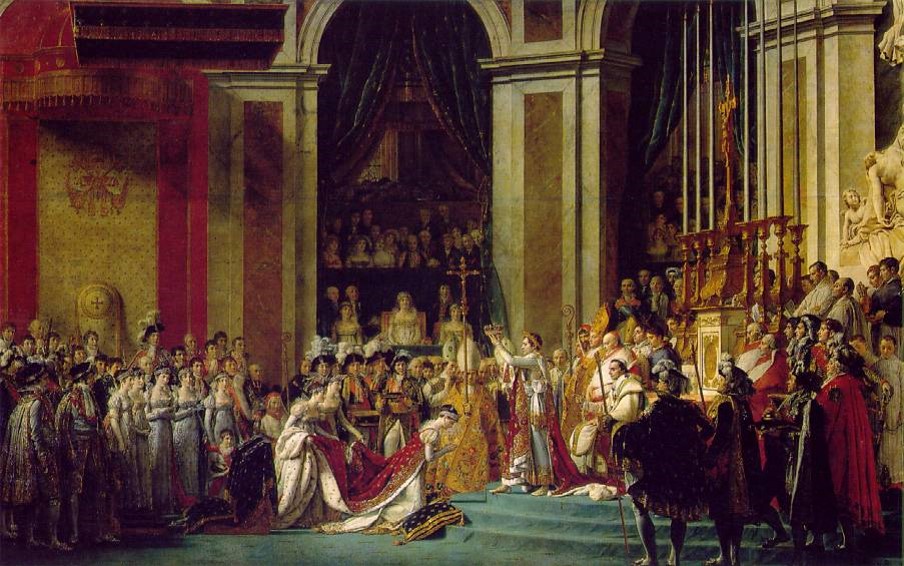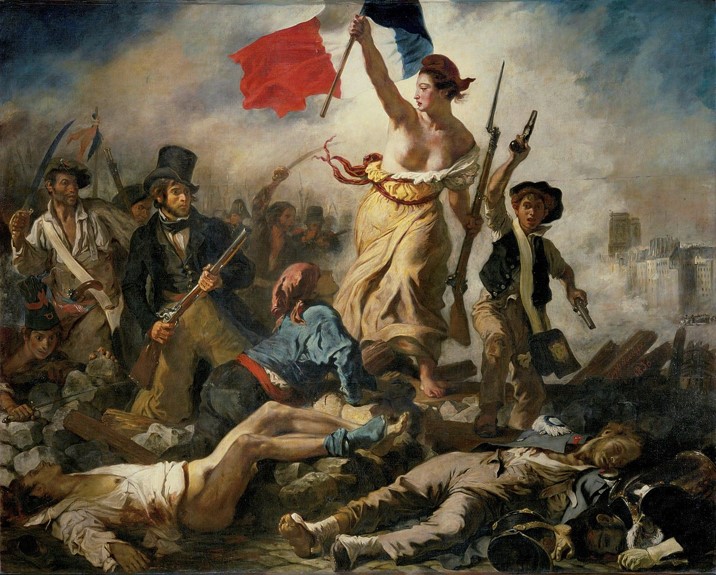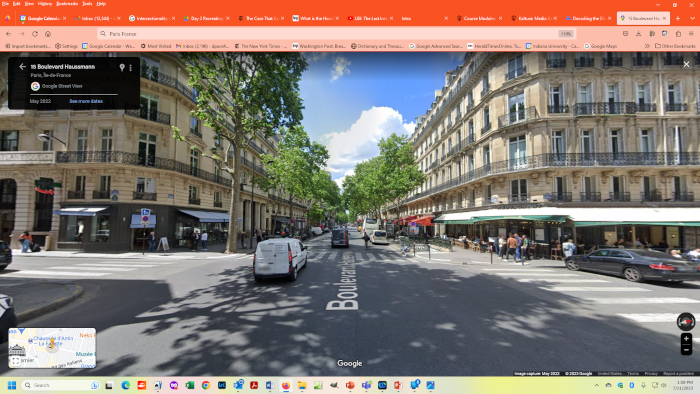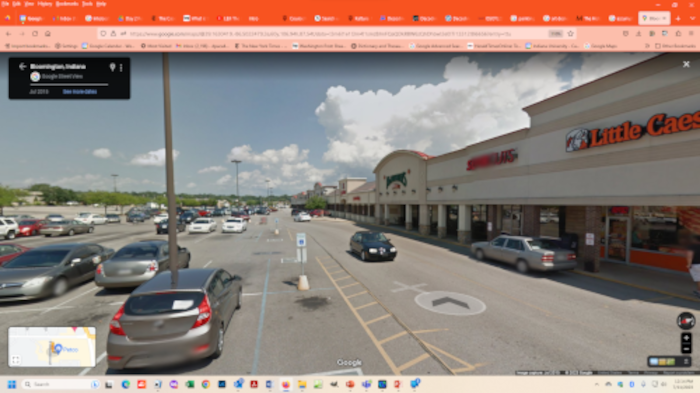What Values are Implicit in these Two Paintings?

Jacques-Lous David, The Coronation of Napolon, 1807

Eugene Delacroix, Liberty Leading the People (1830)
What Values are Implicit in Each of These Passages
|
What is being valued in the decision to create each of these spaces? What mattered most to the society that created them?
 Boulevard Haussmann, Paris |
 Eastland Plaza, Bloomington, Indiana |
What is being foregrounded in each passage? What does that tell us about the values of each author?
|
Dear child! It
is the old Paris that is lost, the city was narrow, unhealthy,
insufficient, but picturesque, varied, charming, full of
memories. We had our favourite walks a step or two away, and our
favourite sights, all happily grouped together! We had our
little outings with our own folk:
how nice it was!... Nothing left of the things which once
constituted our own little world. . .What is
it we
are losing,
by God? Everything!
This is not Athens any longer, it is Babylon! It is not the
capital of France, but of Europe! A wonder, we shall never see
the like – a world! – agreed . . . Nevertheless, it isn't Paris
and there are no Parisians any longer. |
.
. the Paris he [Napoleon III]built remained. In the broad new
boulevards and avenues, the public buildings, the parks and
squares, the networks of water mains and sewers, he left a
permanent impression on the city. By 1870 his public works had
given Paris its present appearance. . . . but the tree-lined
boulevards, the broad avenues, the many public parks and
squares, the monumental buildings terminating long vistas were
all there in 1870; and together with public markets, aqueducts
and reservoirs, and great collector sewers created at the same
time they have continued to serve Paris to this day. |